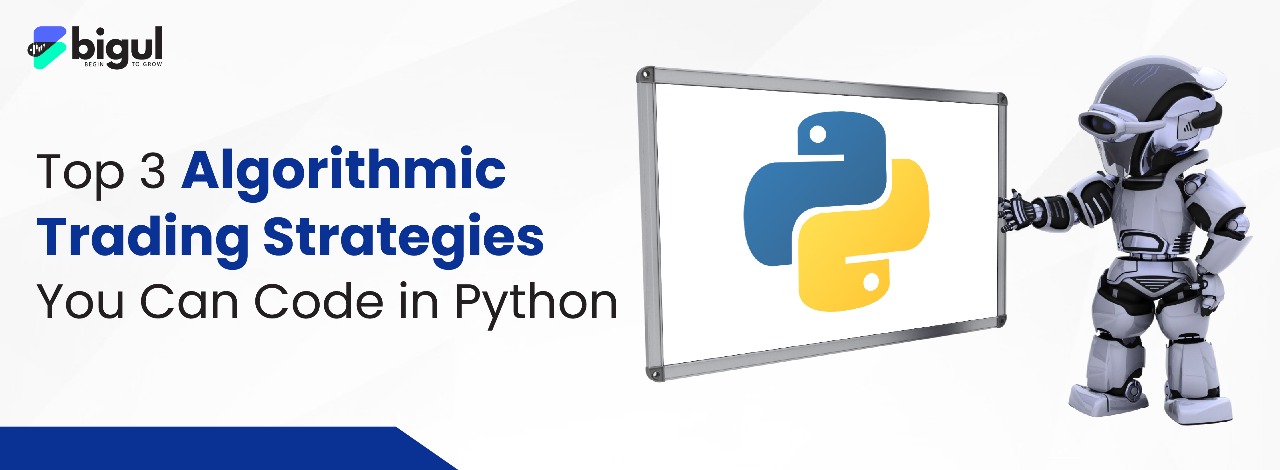Algo Trading, or algorithmic trading using Python in 2025, has become very fascinating and essential for investors in this new era. As AI and the tech world are dominating every field and industry, it is affecting traders and investors as well, and every trader is shifting their traditional towards algo trading using Python or other advanced languages. It is important to follow the proper guide to successfully make and deploy your algorithmic strategy and shift from manual trading to automated trading.
In this algo trading with python blog, we will walk you through 3 powerful algorithmic trading strategies you can code yourself using Python, complete with INFOSYS examples and performance insights. Whether you're a beginner trader or a curious developer exploring financial applications, these strategies will help you understand automated trading in India and beyond.
Also Read | Top Algo Trading Software for Beginners
What is Algo Trading?
Algo Trading, or Algorithmic Trading, refers to the use of computer algorithms/programs to execute trades based on predefined criteria. Python is one of the widely used languages for making Algorithms for Automated Trading. Traders make Algorithms based on their predetermined strategies with properly defined parameters such as buying price, stop loss, trailing points, etc. This method allows for high-speed transactions and can significantly reduce human error. In India, the percentage of traders using algo trading and deploying Algo Trading strategies varies, but the range is generally 50% to 60%.
Why Use Python for Algo Trading?
- Easy to Learn: Python's simple syntax makes it perfect for beginners to make self made algo trading strategy.
- Powerful Libraries: Very useful libraries in algo with Python, including Pandas, NumPy, and TA-Lib, help in data analysis and algorithmic strategy building.
- Backtesting Tools: Libraries like Backtrader and Zipline allow testing strategies on historical data.
- Broker Integration: Including fast API in your algo trading strategy is crucial as Bigul offers one of the fastest API for order punching and managing. To read more about Bigul API click here.
3 Algo Trading Strategies you can code in Python
Algo trading using Python would be one of the best choices for traders in 2025 as more and more retail traders are adopting this approach; keep in mind that Sebi released an important circular for the ones who are offering and adopting the algo trading approach.
These strategies are only made for educational purpose, to showcase how can one code and make simple presentation of traditional approach in easy way. To make your algo trading strategy fully functional you have to add broker API, integrate it with your strategy, and add following other parameters in respect with the conditions.
It is assumed that you have already setup the python environment before executing the following algo trading strategies. If you haven't setup the python environment visit here. Start Algo Trading Using Python | Complete Guide by Bigul.
Download the following python libraries:
1. Moving Average Crossover Strategy
How It Works
This trading strategy uses two moving averages: Short-term MA and Long-term MA
· Buy Signal: When the short-term MA crosses above the long-term MA.
· Sell Signal: When the short-term MA crosses below the long-term MA.
import pandas as pd import numpy as np import matplotlib.pyplot as plt import yfinance as yf from matplotlib.gridspec import GridSpec import matplotlib.dates as mdates import tkinter as tk from tkinter import scrolledtext # Download historical data ticker = "INFY.NS" data = yf.download(ticker, start="2024-01-01", end="2024-12-31")
2. Mean Reversion Strategy:
How It Works
This trading strategy assumes that prices eventually return to their average (mean) value. Traders identify overbought or oversold conditions using indicators like Bollinger Bands or RSI.
· Buy Signal: When the price falls below the lower Bollinger Band (oversold).
· Sell Signal: When the price rises above the upper Bollinger Band (overbought).
import pandas as pd import numpy as np import matplotlib.pyplot as plt import yfinance as yf # Download historical data ticker = "INFY.NS" data = yf.download(ticker, start="2020-01-01", end="2023-01-01", auto_adjust=False) # If the DataFrame has a multi-level column index, flatten it if isinstance(data.columns, pd.MultiIndex): data.columns = [ ' '.join(col).strip() for col in data.columns.values ]
3. Momentum Trading Strategy
How It Works
This strategy buys stocks that are gaining strength and sells those losing momentum. In this trading strategy, we used indicators like RSI, MACD, and Stochastic Oscillator to identify momentum.
· Buy Signal: The code gives a buy signal when at least two out of three indicators (RSI, MACD, and Stochastic) show positive signs — like the stock is gaining strength or momentum.
· Sell Signal: It gives a sell signal when at least two out of three indicators show weakness — like the stock might start falling or losing strength.
import pandas as pd import numpy as np import matplotlib.pyplot as plt import yfinance as yf from ta.momentum import RSIIndicator, StochasticOscillator from ta.trend import MACD # Download historical data ticker = "INFY" data = yf.download(ticker, start="2024-01-01", end="2024-12-31") # Make sure data is properly formatted data = data.astype(float) # Convert to float to avoid dimension issues
Conclusion: Implementing Your Algorithmic Trading Strategy
Each of these 3 strategies offers unique advantages and can be tailored to different market conditions, risk tolerances, and investment horizons. To successfully implement these algorithms:
- Start with paper trading to test your strategy without risking real capital.
- Implement proper risk management with position sizing and stop-loss orders.
- Monitor strategy performance and make necessary adjustments in your Algo trading strategy from time to time.
- Consider transaction costs in your backtesting and performance evaluation.
- Diversify across multiple strategies to reduce dependency on any single algorithm.
The Python code examples provided serve as starting points that you can modify and optimise. As you gain confidence and experience, you can enhance these algo trading strategies and even can make and code by one yourself with additional features like:
- Advanced portfolio optimisation
- Real-time data processing
- Custom risk management rules
- Multi-asset class implementation
Remember that consistent success in algorithmic trading comes not just from advanced algorithms but from disciplined execution, continuous improvement, and thorough risk management.
Python offers very easy to code environment for beginner traders and have various libraries to code you algorithmic trading strategy and shift completely onto automated trading approach, which brings lots of benefits such as avoidance of emotional trading and more.
Disclaimer
The strategies and code examples presented are for educational purposes only and do not constitute financial advice. Always conduct thorough research and consider consulting with a financial professional before implementing any trading strategies with real capital and risk management principles, and ensure compliance with SEBI guidelines before live trading. Trading involves risk—always test strategies before investing real money.











.jpg)
.jpg)
